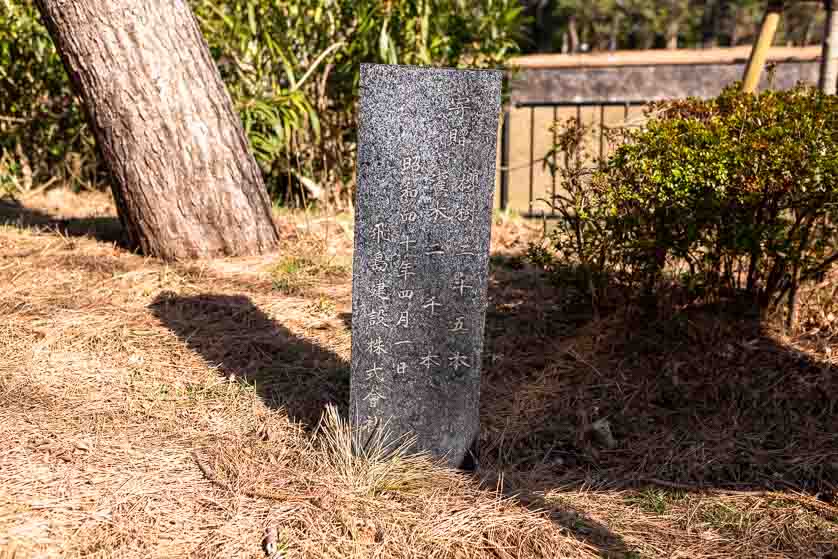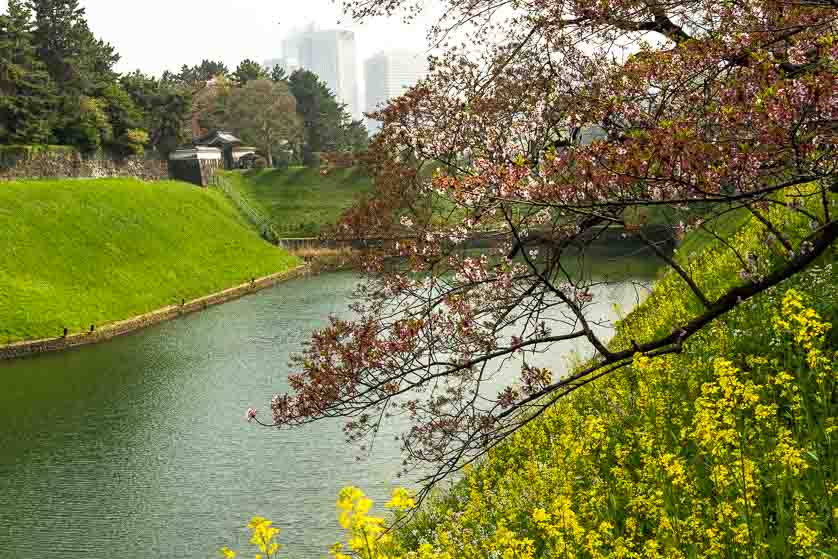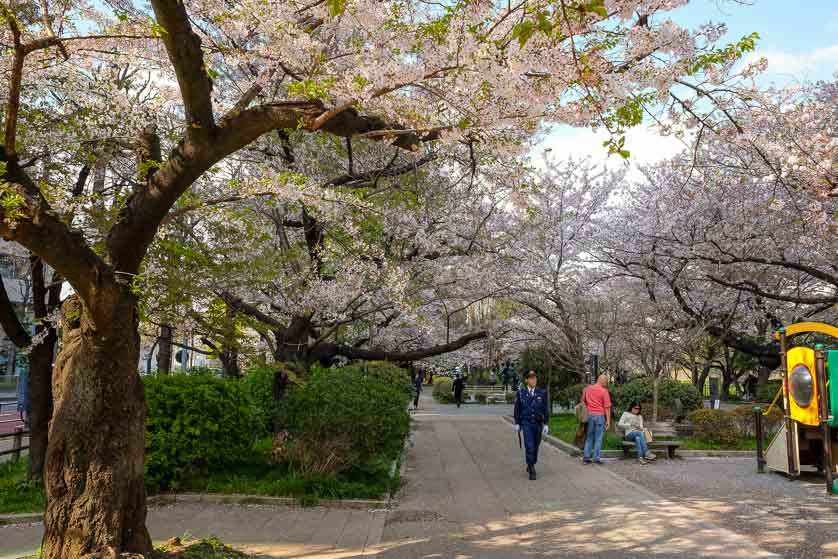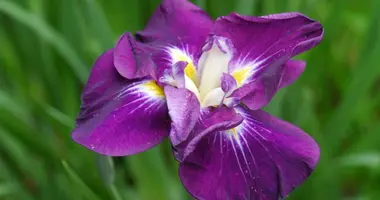Chidorigafuchi Park: A scenic cherry blossom paradise in Tokyo
- Published on : 20/06/2024
- by : Japan Experience
- Youtube

Sculpture by Mexican artist, Sebastian, in Chidorigafuchi Park
Nestled in the heart of Tokyo, Chidorigafuchi Park stands as a testament to the breathtaking beauty of Japan's cherry blossoms. This small yet historically significant park overlooks the Hanzo Moat on the western edge of the Imperial Palace Tokyo. With its 700-meter-long green walkway lined with hundreds of sakura trees, Chidorigafuchi Park transforms into a pink wonderland every spring, drawing visitors from all over the world. The park's unique location and rich history, combined with its stunning natural beauty, make it one of the most sought-after cherry blossom viewing spots in the Japanese capital.
Introduction to Chidorigafuchi Park and its significance
Chidorigafuchi Park, known as 千鳥ヶ淵公園 (Chidorigafuchi Kōen) in Japanese, is a narrow strip of land approximately 450 meters long and 20 meters wide. It stretches from the Hanzomon Gate of the Imperial Palace to Chidorigafuchi Intersection, offering visitors a unique vantage point over the Hanzo Moat. The park's history dates back to the late 19th century when the first cherry trees were planted by British diplomat Ernest Satow in 1881.
The park's name, Chidorigafuchi, is said to come from its unusual shape, which resembles plovers (chidori in Japanese). Today, it serves as a serene oasis in the bustling metropolis, providing a stark contrast between ancient Japan and the modern skyline. The park's elevated position, about 15 meters higher than the eastern side of the Imperial Palace, offers sweeping views of the moat and the edge of the inner palace grounds.
While Chidorigafuchi Park is renowned for its cherry blossoms, it also features other attractions throughout the year. These include a pond with classical-type statues, a striking modern sculpture by Mexican artist Taller Sebastián, and a children's play area. The park's features and its proximity to other historical landmarks make it a popular destination for both locals and tourists alike.

Plaque commemorating gift of 25 cherry trees by a local company in 1965 to Chidorigafuchi Park.
Best times to visit and seasonal highlights
The prime time to visit Chidorigafuchi Park is during the cherry blossom season, typically from late March to early April. This is when the park's famous sakura trees burst into bloom, creating a stunning pink canopy over the moat. The exact timing can vary slightly from year to year depending on weather conditions, so it's advisable to check the cherry blossom forecast provided by the Japan Meteorological Corporation or the Japan National Tourism Organization for the most up-to-date information.
During the cherry blossom season, the park hosts the Chiyoda Sakura Festival, which usually runs from late March to early April. This festival sees the cherry trees illuminated at night, creating a magical atmosphere for evening walks. The illuminations typically run from sunset (around 6 pm) to 10 pm, offering a different perspective on the blossoms.
While spring is undoubtedly the most popular time to visit, Chidorigafuchi Park has something to offer year-round. In summer, the lush greenery provides a cool respite from the heat. Autumn brings its own beauty with changing leaf colors, and winter offers a serene, sometimes snow-dusted landscape. However, it's worth noting that boat rentals are only available from March through November, ceasing during the winter months.

Cherry blossom in Chidorigafuchi Park overlooking the Hanzo Moat of the Imperial Palace
Exploring the 700-meter-long green walkway
The Chidorigafuchi Green Way is the park's main attraction, offering a scenic 700-meter walk along the moat. This walkway is lined with approximately 260 cherry trees of various species, including the popular Somei-yoshino and yamazakura varieties. As you stroll along this path, you'll be treated to breathtaking views of the cherry blossoms reflecting on the water's surface.
The walkway provides several vantage points and dedicated lookout platforms where visitors can pause to take in the scenery. These spots offer sweeping views of the moat and the edge of the inner palace grounds, providing excellent photo opportunities. The dense foliage of the cherry trees creates a tunnel-like effect, immersing visitors in a world of pink blossoms during the spring.
Throughout the year, the Green Way serves as a popular route for joggers and a peaceful lunch spot for office workers from the nearby Kojimachi business district. The path is well-maintained and easily navigable, making it accessible for visitors of all ages and abilities.
Cherry blossom viewing experience and Chiyoda Sakura Festival
The cherry blossom viewing experience, known as hanami in Japanese, reaches its peak during the Chiyoda Sakura Festival. This annual event typically runs from late March to early April, coinciding with the full bloom of the cherry blossoms. During this time, Chidorigafuchi Park welcomes over one million visitors, making it one of the most popular hanami spots in Tokyo.
The festival transforms the park into a vibrant celebration of spring. Food stalls and special events are often set up, adding to the festive atmosphere. However, unlike some other hanami spots in Tokyo, Chidorigafuchi Park doesn't have large open spaces for picnicking. Instead, the focus is on enjoying the blossoms while strolling along the walkway or from a boat on the moat.
One of the highlights of the Chiyoda Sakura Festival is the nighttime illumination of the cherry trees. From sunset to 10 pm, the trees are lit up, creating a magical, ethereal atmosphere. This yozakura (nighttime cherry blossom viewing) experience offers a different perspective on the blossoms and is particularly popular among couples for its romantic ambiance.

Chidorigafuchi Park cherry blossoms in spring, Chiyoda ward, Tokyo
Nighttime illuminations and romantic strolls
As part of the Chiyoda Sakura Festival, Chidorigafuchi Park comes alive at night with special illuminations. From sunset (around 6 pm) to 10 pm, the cherry trees along the 700-meter Green Way are lit up, creating a magical nighttime landscape. These illuminations use energy-efficient, solar-powered LED lights to minimize environmental impact while maximizing the beauty of the blossoms.
The nighttime viewing, or yozakura, offers a completely different atmosphere compared to daytime visits. The soft lighting creates a romantic ambiance, with the illuminated blossoms reflecting on the surface of the moat. This makes Chidorigafuchi Park a popular spot for couples and photography enthusiasts alike.
During the illumination period, visitors can enjoy extended hours for boat rentals, allowing for a unique nighttime boating experience. Gliding across the water under the illuminated cherry blossoms creates an almost otherworldly experience, with the Tokyo Tower visible in the distance, adding to the magical cityscape.
Nearby attractions and points of interest
Chidorigafuchi Park's central location makes it an excellent starting point for exploring other nearby attractions. Just a short walk away is the Chidorigafuchi National Cemetery, a solemn memorial for those who died in World War II. The cemetery offers a quiet space for reflection and is home to additional cherry trees.
The park is also close to several embassies, including the British Embassy, the South African Embassy, and the Paraguay Embassy. For those interested in photography, the JCII Camera Museum is located just behind the British Embassy.
Art enthusiasts can visit the nearby Hanzomon Museum, which houses a superb collection of Buddhist art. The National Theater is also within walking distance, offering traditional Japanese performances.
For those looking to explore more of Tokyo's historical sites, the Yasukuni Shrine is about a 13-minute walk from Chidorigafuchi Park. This controversial shrine is dedicated to Japan's war dead and is also known for its beautiful cherry blossoms.
Whether you're a history buff, a nature lover, or simply looking to experience the best of Tokyo's cherry blossom season, Chidorigafuchi Park and its surrounding area offer a perfect blend of natural beauty and cultural significance. Don't forget to check out some Books on Tokyo to enhance your visit and gain deeper insights into this fascinating city.




























